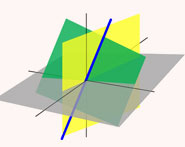


 تاريخ الرياضيات
تاريخ الرياضيات
 الرياضيات في الحضارات المختلفة
الرياضيات في الحضارات المختلفة 
 الرياضيات المتقطعة
الرياضيات المتقطعة
 الجبر
الجبر
 الهندسة
الهندسة 
 المعادلات التفاضلية و التكاملية
المعادلات التفاضلية و التكاملية 
 التحليل
التحليل
 علماء الرياضيات
علماء الرياضيات |
Read More
Date: 22-9-2021
Date: 21-8-2021
Date: 23-9-2021
|
We now consider an important example of manipulation of sequential pairwise voting. Suppose three voters on City Council have to decide whether to add a new sales tax. Initially
• A prefers the tax
• B prefers the tax
• C prefers no tax
so a tax will be introduced.
However, let’s assume A hates income taxes and will never vote for one. On the other hand, B prefers income tax to sales tax. Suppose C moves an amendment to change the tax to an income tax.
We now have:
Original motion: that a city sales tax of 5% be introduced.
Amendment (moved by C): change “sales tax of 5%” to “income tax of 2%.” (We’ll assume the 2% income tax will provide the same total as the 5% sales tax.)
In the vote on the amendment, both B and C will vote in favor, with A against, so the amendment is carried. So the motion becomes: a city income tax of 2% shall be introduced. In the vote on the new motion, both A and C are against, while B votes in favor; so the motion is lost and there is no tax.



|
|
|
|
التوتر والسرطان.. علماء يحذرون من "صلة خطيرة"
|
|
|
|
|
|
|
مرآة السيارة: مدى دقة عكسها للصورة الصحيحة
|
|
|
|
|
|
|
نحو شراكة وطنية متكاملة.. الأمين العام للعتبة الحسينية يبحث مع وكيل وزارة الخارجية آفاق التعاون المؤسسي
|
|
|